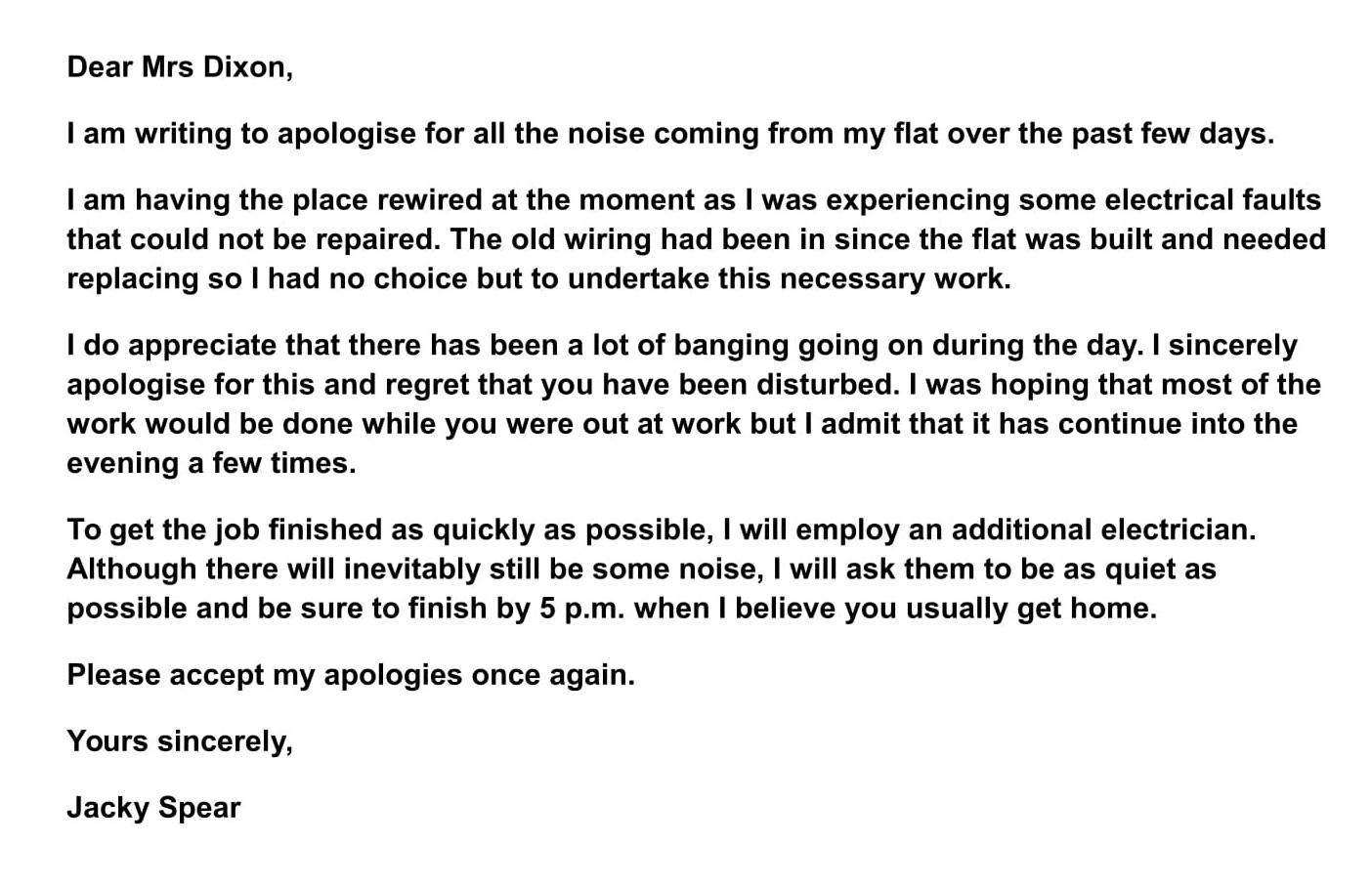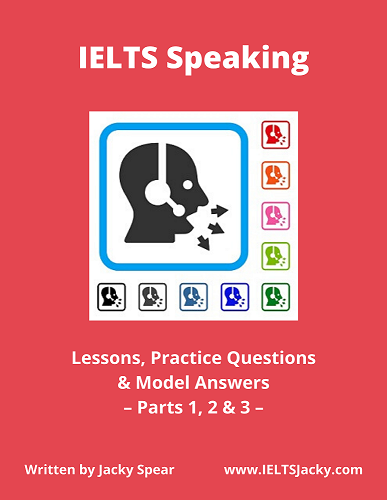IELTS
Letters
How To Write a Letter of Apology
Letters of apology are common types of IELTS letters. This lesson will show you step-by-step how to write them.
Here’s what the lesson includes:
- Question structure
- Letter structure
- Formal or informal?
- Greeting & signoff
- Generating ideas
- Sample
letters
Question structure
All questions for IELTS letters have the same structure. They are made up of 3 parts.
Part 1 – The topic.
Part 2 – The person you must write to.
Part 3 – What you should write about (listed as 3 bullet points).
Here is a sample question for a letter of apology with the 3 parts illustrated.

Understanding this will help you to quickly analyse the question and plan your answer. To help you plan, use the letter structure below.
For a full lesson on planning click here: How To Plan IELTS Letters
Letter structure
The layout of IELTS letters should follow the structure of the question and consist of four paragraphs with a greeting at the beginning and a signoff at the end.
Use this easy to remember 6 part structure.
1) Dear .....
2) Paragraph 1: Purpose – why you are writing
3) Paragraph 2: Write about 1st bullet point
4) Paragraph 3: Write about 2nd bullet point
5) Paragraph 4: Write about 3rd bullet point
6) Signoff
All you need to do to create your plan is to add in the details from the question, like this:
1)
Dear ..... (neighbour)
2) Paragraph 1: Purpose – to apologise for the noise
3) Paragraph 2: explain the reason for the noise (bullet point 1)
4) Paragraph 3: offer your neighbour an apology (bullet point 2)
5) Paragraph 4: tell them what action you will take (bullet point 3)
6) Signoff
Formal & Informal IELTS Letters
IELTS letters must be written in the appropriate tone and style. There are two options:
- Formal – to someone you don’t know or don’t know well.
- Informal – to a friend.
It is essential that you are able to identify what type of question you’re required to write.
Follow this rule:
- If the question includes the word ‘friend’, use informal language.
- If the question does not include the word ‘friend’, use formal language.
The only exception is if the letter is to a close family member when you would also use an informal tone.
One situation that can be confusing is where the person you have to write to is a neighbour, as in our sample question. Assume that you do not know them very well and keep the letter formal.
This leads us on to the opening of your letter – the greeting.
The Greeting & Signoff
The Greeting
It is most likely that you would know the name of your neighbour so make one up, e.g. Mrs Dixon.
If you did not know their name you would write, ‘Dear Sir / Madam’.
If you were writing an informal letter to a friend, you would use their first name, e.g. ‘Dear John’.
The greeting you use will determine how you sign off your letter.
The Signoff
For a formal letter, there are two main options. The correct one will depend on who you are addressing:
- Dear Mrs Dixon (name known) – Yours sincerely
- Dear Sir/Madam (name unknown) – Yours faithfully
You could also use ‘Kind regards’. This is formal but friendly and is appropriate for most situations. It is particularly useful if you struggle to remember how to spell ‘sincerely’ and ‘faithfully’.
Always sign off a formal letter with your full name, e.g.
Yours sincerely,
Jacky Spear
For an informal letter to a friend, use one of these phrases followed by your first name:
- All the best
- See you soon
- Keep in touch
For example,
Keep in touch,
Jacky
For our sample letter, we will use this greeting and signoff:
Dear Mrs Dixon...
....Yours sincerely,
Jacky Spear
We are now ready to think up some ideas to write about. We have the guidelines of the 3 bullet points to help us so this won’t be difficult.
How To Generate Ideas for IELTS Letters
With only 150 words to write, you won’t need many ideas. Just make sure that you write about each bullet point and develop each idea fully.
They don't have to be the best ideas you can possibly think of. Go with your first thoughts and don’t waste time trying to think of better ideas. Just make sure that they are directly related to the bullet points.
Note your ideas beside each bullet point on the exam paper, like this:
Your neighbour has written to you to complain about the noise from your flat.
Write a letter to your neighbour. In your letter:
- explain the reason for the noise
Having the flat rewired
- offer your neighbour an apology
Sorry the noise has disturbed them
- tell them what action you will take.
Ask electrician to be as quiet as possible. Pay for additional electrician so job finished sooner.
That’s our planning complete. Once you’ve had some practice, you’ll be able to do this in just a few minutes. Taking time to plan makes writing IELTS letters far quicker and easier than if you don’t do this step. You will also write a better letter and get higher marks.
So, let’s write our letter.
Writing the Letter
Here’s our plan again with all our notes added in.
1)
Dear ..... (neighbour)
2) Paragraph 1: Purpose – to apologise for the noise
3) Paragraph 2: explain the reason for the noise (bullet point 1)
Having the flat rewired
4) Paragraph 3: offer your neighbour an apology (bullet point 2)
Sorry the noise has disturbed them
5) Paragraph 4: tell them what action you will take (bullet point 3)
Ask electrician to be as quiet as possible. Pay for additional electrician so job finished sooner.
6) Signoff
We’ve already decided on the greeting so we’ll start with paragraph 1.
Paragraph 1
In the first paragraph, you must state the reason for writing the letter, that is, its purpose.
Paragraph 1: Purpose – to apologise for the noise
Many students make the mistake of missing this purpose sentence out but it's very important. Including it will gain you marks.
It only requires one sentence. He’s an example appropriate to our letter of apology.
I am writing to apologise for all the noise coming from my flat over the past few days.
Top vocabulary tip: Do not use contractions in formal letters. They are informal language.
For a letter of apology to a friend, it would be appropriate to write, I’m writing to apologise / to say sorry for...
Paragraph 2
In the second paragraph, you write about bullet point 1.
Paragraph 2: explain the reason for the noise (bullet point 1)
Having the flat rewired
Remember to keep the language formal for this question. Aim for around 50 words for paragraph 2, 3 and 4. You could write something like this.
I am having the whole place rewired at the moment as I was experiencing some electrical faults that could not be repaired. The old wiring had been in since the flat was built and needed replacing so I had no choice but to undertake this necessary work.
Paragraph 3
The third paragraph should cover the second bullet point.
Paragraph 3: offer your neighbour an apology (bullet point 2)
Sorry the noise has disturbed them
I do appreciate that there has been a lot of banging going on during the day. I sincerely apologise for this and regret that you have been disturbed. I was hoping that most of the work would be done while you were out at work but I admit that it did continue into the evening the other day.
Paragraph 4
Paragraph 4 addresses the third bullet point.
Paragraph 4: tell them what action you will take (bullet point 3)
Ask electrician to be as quiet as possible. Pay for additional electrician so job finished sooner.
To get the job finished as quickly as possible, I will employ an additional electrician. Although there will inevitably still be some noise, I will ask them to be as quiet as possible and be sure to finish by 5 p.m. when I believe that you usually get home.
Now we just need to add the signoff we decided on earlier and our letter is complete.
The Finished Letter
Here is the finished letter.

(183 words)
Practice Question
To get some practice writing IELTS letters of apology, write a letter for the question below.
You have just missed a friend’s party.
Write a letter to apologise. In your letter:
- apologise to your friend
- explain why you did not attend the party
- say what you plan to do to make up for missing the party.
This
letter is to a friend so must be written in an informal tone and style. Use the
planning structure I showed you above to plan before you start writing.
Here’s a sample letter. Can you identify the language and grammar structures I’ve used to give it an informal tone?
Dear Sally,
I’m writing to apologise for missing your house-warming party.
I can’t tell you how sorry I am. I know how much you were looking forward to showing me around your new home. I feel terrible at having let you down. You must have wondered why I didn’t turn up having accepted your invitation.
The truth of the matter is that I put the wrong date in my diary. What an idiot! For some reason, I wrote it in for Saturday night, not Friday. I only realised when I saw photos of everyone having a great time at your place on Facebook. I certainly missed a great party by the look of it.
Anyway, I’d like to make it up to you by treating you to coffee at the new café that’s just opened up in town. Let me know what date and time suit you. I promise to get the day right this time. And, I hope you’ll let me pop round to see your lovely new home on another occasion.
See you soon,
Jacky
(177 words)
You'll find lessons on other common IELTS letter topics in the menu below.
|
Want to watch and listen to this lesson? Click on this video. |
Like this page?
Common Letter Topics
IELTS Letters – All Lessons
IELTS General Writing – A summary of the test including important facts, test format & assessment.
Letter
Format – The format, the 7 topics, letter
structure, formal & informal, assessment & marking criteria, sample
questions. Essential information you need to know.
Letter Writing Tips – Learn top tips on how to meet the assessment and marking criteria and achieve a high score.
Letter Writing Structure – Find out how to use this easy to learn letter structure to write a high-scoring letter. Includes a model answer.
How To Plan a Letter – Learn a simple 5 step process & 6 part letter structure. Also, help to understand the question & generate ideas.
Formal or Informal – How to decide what type of
letter to write. Sample questions & 2 model letters.
Letter Writing Vocabulary – Learn useful phrases to help you achieve a high score. Also, know how to start & end your letter.
How To Write an Informal Letter – Step-by-step instructions, simple 4 step plan & 6 part letter structure, model letter.
How To Write a Formal Letter – Step-by-step instructions, simple 4 step plan & 6 part letter structure, model letter.
Letter Topics – Learn the 7 most common letter topics & other popular subjects. Includes 20 sample questions.







